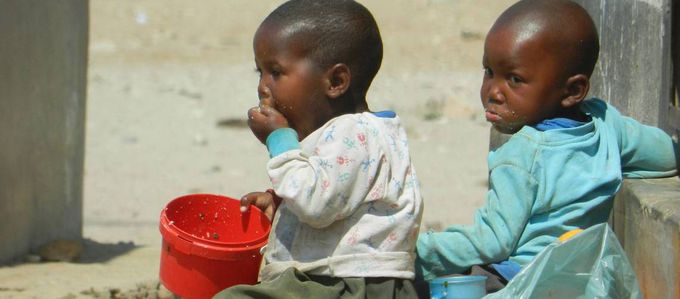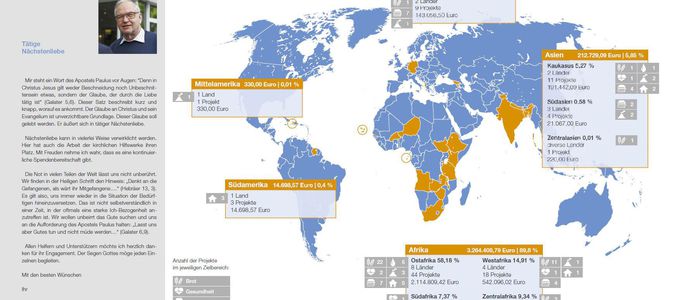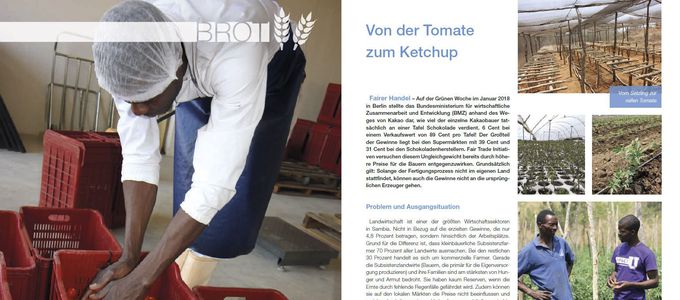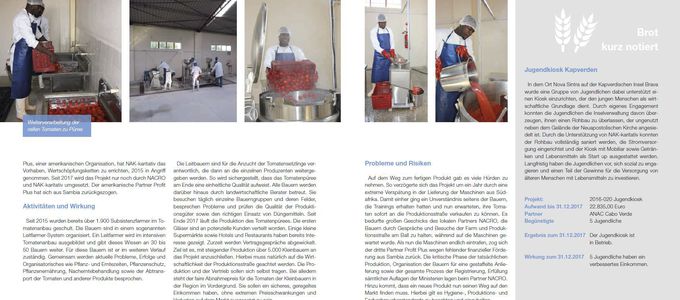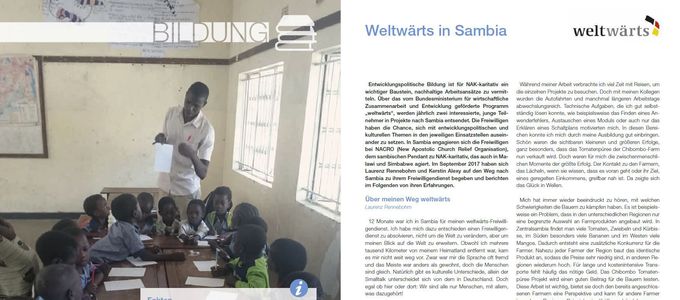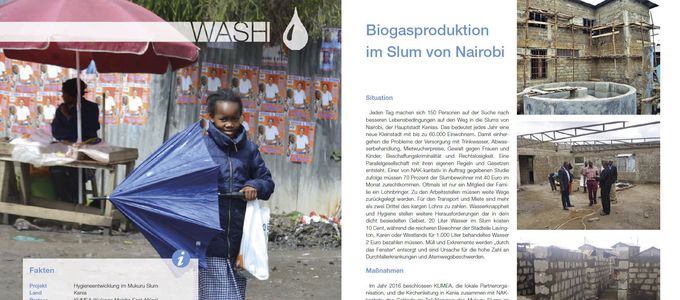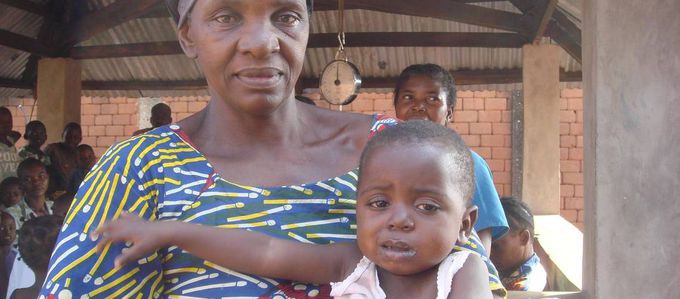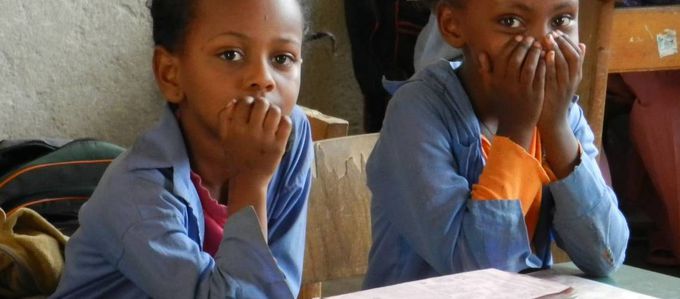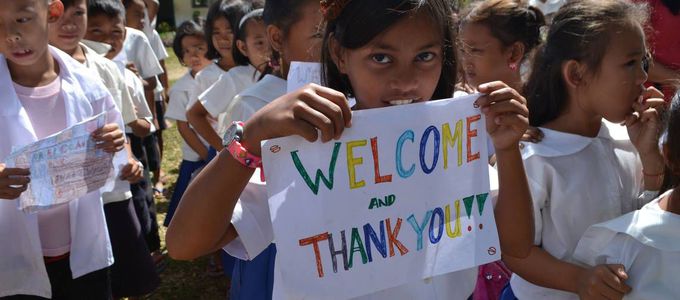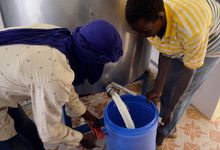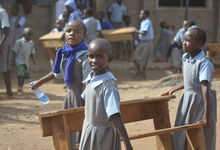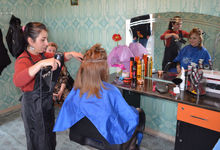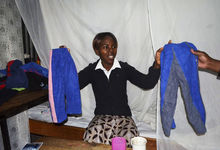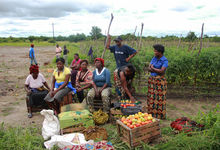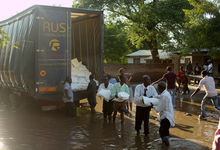The numbers behind charity
About four million euros went to one hundred projects in 24 countries: this what the 2017 annual report of NAK-karitativ states. The report was published recently and describes some of the fates behind the figures.
“We are touched by the need that is found in many parts of the world,” is how the retired Chief Apostle Wilhelm Leber, the charity’s patron, describes the motivation for the ongoing commitment. “There are many ways to practise charity. This is where the Church’s relief organisations see their task.”
Where the funds went
The organisation of the New Apostolic Church in Germany cites six fields of activity in its annual report 2017.
The main focus with more than 1.7 million euros in expenditures was on food; that is, securing and developing people’s livelihood. A prime example is the production of tomato ketchup in Zambia, which not only provides work for six employees, but also supports 1,900 farmers and their families.
Well over 780,000 euros went towards education. The funds were mainly used for the building and expansion of schools, but also for vocational training for young people and continuing adult education.
The field of structure received nearly 490,000 euros. The model project here is the establishment of a waste disposal and recycling system in Banjul in Gambia.
Nak-karitativ also spent approximately 290,000 euros in emergency relief. This money was used to fight famine in East Africa and for emergency assistance and integration of refugees in Germany, Greece, Jordan, and Serbia.
More than 250,000 euros were allocated to health. Funds went to Coming Clean, a project in South Africa to fight drug addiction, for example. It is a joint project with Maskahe NPC, the aid organisation of the New Apostolic Church Southern Africa. This is not the only aid organisation that NAK-karitativ works with, however. It also works on joint projects with the aid organisations in Zambia (NACRO) and Kenya (KUMEA).
Nearly 90,000 euros went towards WASH, the field dedicated to improving water and sanitation management. The money went towards a bio centre project in Mukuru Slum in Kenya. Central toilet and shower facilities channel their wastewater into a biogas plant. The methane produced provides electricity for lighting and separate cooking areas.
Support on the credit side
For NAK-karitativ, the main focus is Africa. Nearly 90 per cent of its expenditures go there. Well over 2.1 million euros went to East Africa, nearly 1.1 million were shared by West, Central, and Southern Africa. This is followed by Asia with a share of 5.8 per cent ahead of Europe with 3.9 per cent and the Americas with 0.4 per cent.
Over a ten-year average, 98 per cent of the projects are financed by donations. The largest amount is covered by individual donations, followed by sponsorships, long-term campaigns, as well as inheritances and estates. Subsidies are also reflected on the credit side.
“We at NAK-karitativ are proud and pleased about our many sponsors, supporters, and critics,” says managing director Jörg Leske in his foreword. They have managed to retain a differentiated perspective despite the current heated political discussion on the big issues of flight and migration.”
Article info
Author:
Date:
Keywords:
Andreas Rother
10.12.2018
Africa,
Asian,
Europe,
Aid agencies,
Social commitment,
International


